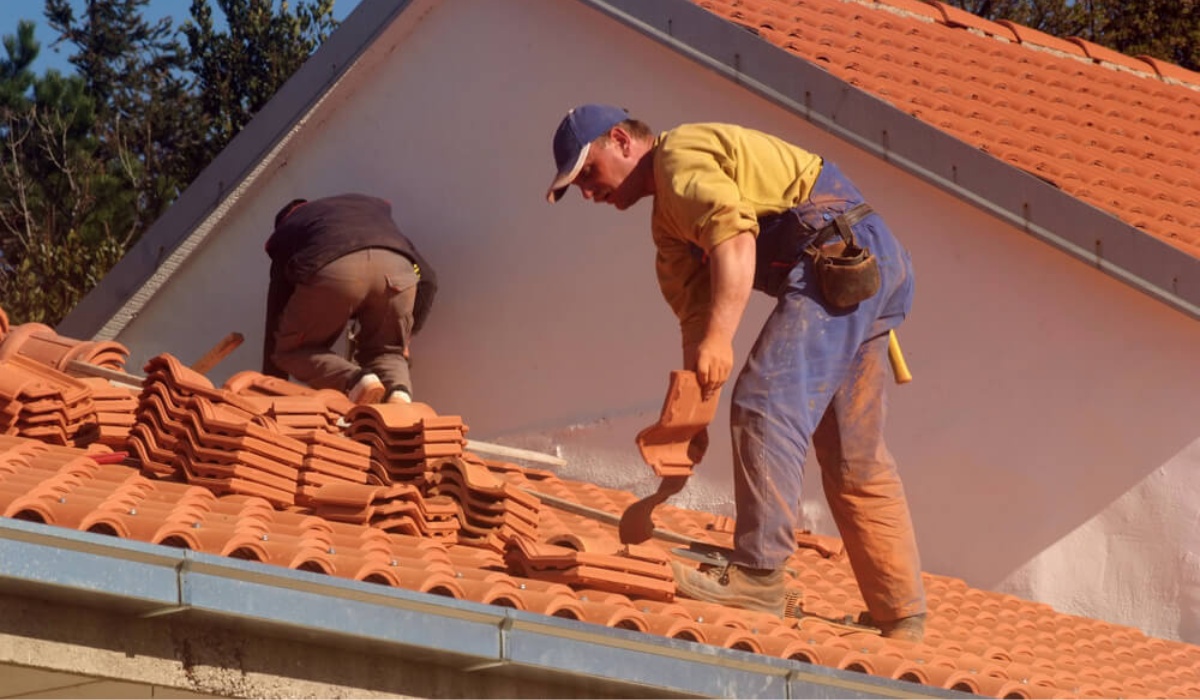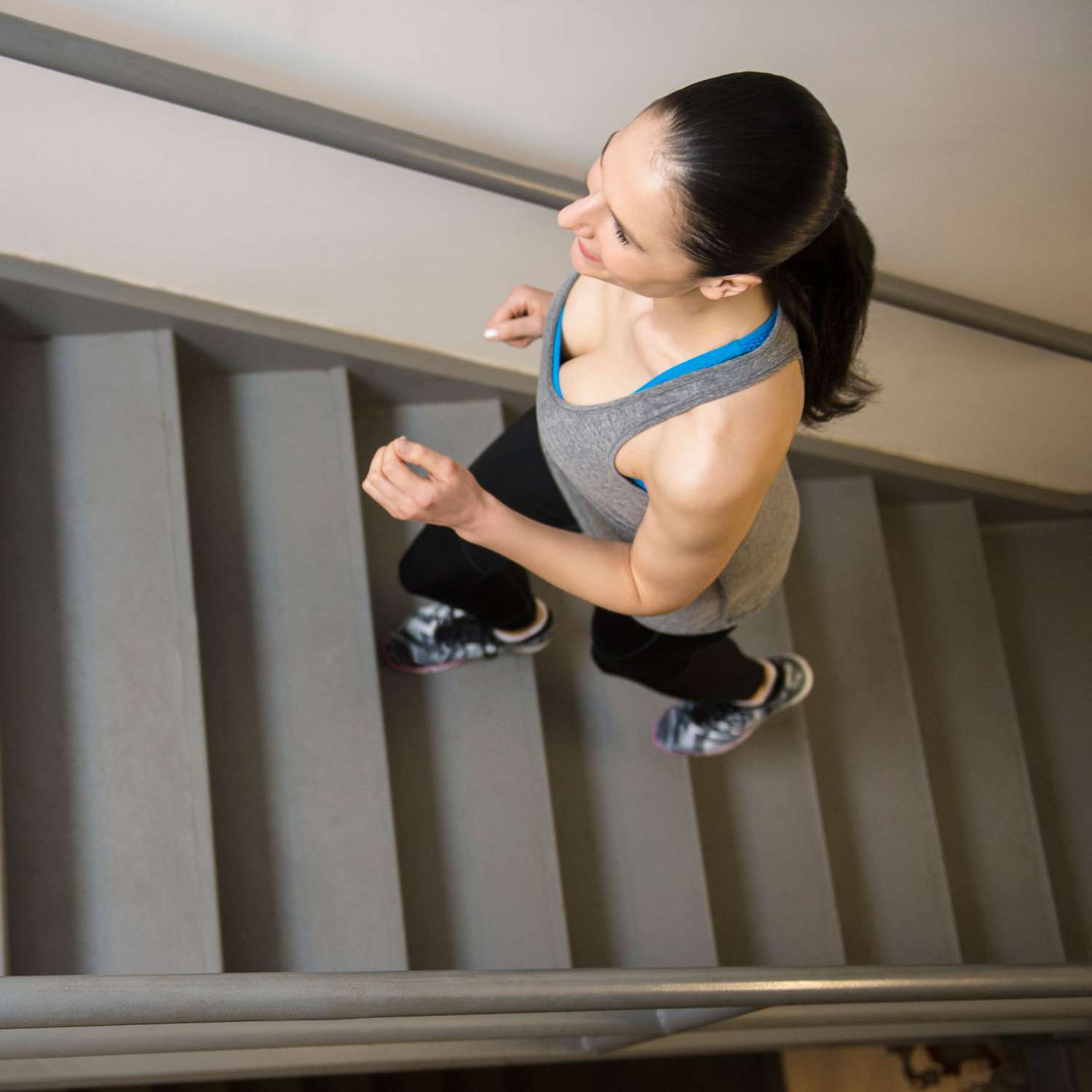

Articles
How To Walk On Tile Roof
Modified: January 8, 2024
Learn the step-by-step process of walking on a tile roof safely with our informative articles. Get expert tips and guidance to avoid damage and accidents.
(Many of the links in this article redirect to a specific reviewed product. Your purchase of these products through affiliate links helps to generate commission for Storables.com, at no extra cost. Learn more)
Introduction
Walking on a tile roof may seem like a daunting task, but with the right precautions and techniques, it can be done safely and effectively. Whether you need to inspect your roof, perform repairs, or clean the gutters, knowing how to navigate a tile roof is essential. In this article, we will guide you through the steps and safety measures required to walk on a tile roof without causing any damage.
Before you start walking on your tile roof, it’s important to gather the necessary tools and materials. Having the right equipment will not only make the task easier, but it will also ensure your safety and prevent any potential damage to the roof tiles.
Here is a list of tools and materials you will need:
- Safety harness or roof anchor system
- Rubber-soled shoes or boots
- Roof ladder or extension ladder
- Roof tile pads or boards
- Gloves
- Safety goggles
Once you have gathered all the necessary tools and materials, it’s time to prepare for walking on the tile roof. Proper preparation is crucial to ensure a successful and safe roofing experience. Follow these steps to get ready:
- Check the weather forecast: Avoid walking on a tile roof during severe weather conditions such as rain, strong winds, or extreme heat. Not only can this compromise your safety, but it can also make the roof surface slippery and increase the risk of accidents.
- Inspect the roof for any visible damage: Before stepping on the tiles, visually inspect the roof for any broken or cracked tiles. If you notice any damage, consider hiring a professional to perform the necessary repairs before attempting to walk on the roof.
- Trim any nearby trees: If there are any tree branches hanging over your roof, trim them back to prevent them from interfering with your movement or causing damage to the roof tiles.
Key Takeaways:
- Walking on a tile roof requires proper preparation, safety gear, and cautious navigation to prevent damage and ensure personal safety. Prioritize maintenance and care to extend the longevity of your tile roof.
- Prioritize safety by using the right equipment, checking the weather, and being mindful of potential hazards when walking on a tile roof. Regular maintenance and professional inspections are crucial for preserving the integrity of your tile roof.
Read more: How To Walk On Roof
Tools and Materials Needed
Before venturing onto a tile roof, it’s crucial to have the right tools and materials to ensure a safe and successful experience. Here is a comprehensive list of what you will need:
Safety Equipment:
- Safety Harness or Roof Anchor System: A safety harness is essential to prevent falls and ensure your stability while walking on the roof. Alternatively, you can use a roof anchor system that attaches to a secure point on the roof.
- Rubber-Soled Shoes or Boots: Wearing shoes or boots with rubber soles will provide you with better traction and stability on the slippery roof surface.
- Safety Goggles: Protect your eyes from dust, debris, and any potential hazards that may arise while working on the roof.
- Gloves: Gloves will protect your hands from sharp edges, tile chips, and the heat of the roof surface.
Tools:
- Roof Ladder or Extension Ladder: A roof ladder or an extension ladder with adjustable legs will enable you to safely climb onto the roof.
- Roof Tile Pads or Boards: These pads or boards provide a stable and even surface to distribute your weight and prevent damage to the roof tiles. You can use plywood or specialized roof tile pads.
- Roofing Nails: Roofing nails are essential for securing loose or damaged tiles during repairs.
- Hammer or Roofing Hammer: A hammer is necessary to remove and replace tiles if needed.
- Tin Snips: Tin snips will come in handy if you need to trim or shape roof flashing or other metal elements.
- Wire Brush: A wire brush is useful for cleaning debris and moss from the tiles.
- Leaf Blower or Soft Broom: A leaf blower or a soft broom can be used to remove leaves, dirt, and other loose debris from the roof surface.
Having the right tools and materials will make walking on a tile roof easier and safer. It is important to ensure that all equipment is in good condition and functioning properly before starting any work on the roof.
Preparing for Walking on a Tile Roof
Before you step foot on a tile roof, it’s crucial to take the necessary precautions and properly prepare yourself. By following these steps, you can ensure your safety and minimize any potential damage to the roof:
Read more: How To Walk On A Metal Roof
1. Check the Weather:
Before attempting to walk on a tile roof, always check the weather forecast. It’s important to avoid walking on the roof during inclement weather conditions, such as rain, strong winds, or extreme heat. These conditions can make the roof surface slippery and increase the risk of accidents.
2. Inspect the Roof:
Prior to walking on the tile roof, visually inspect the surface for any visible damages such as cracked or broken tiles. If you notice any issues, it’s best to contact a professional roofer to address the repairs before proceeding with your work. Walking on a damaged roof can cause further harm to the tiles and compromise your safety.
3. Trim Nearby Trees:
If there are any overhanging branches from nearby trees, trim them back to prevent them from obstructing your movement on the roof or causing damage to the tiles. Overhanging branches can also deposit leaves and debris onto the roof, making it more slippery and hazardous.
4. Clear the Area:
Before starting your work, clear the area surrounding the roof of any potential obstacles or hazards. Remove any tools, debris, or objects that could potentially cause accidents or tripping hazards while you are on the roof.
Read more: How To Clean A Tile Roof
5. Wear Appropriate Attire:
When walking on a tile roof, it’s essential to wear the right attire. Opt for comfortable, non-restrictive clothing that allows for ease of movement. Additionally, wear rubber-soled shoes or boots to provide better traction on the roof surface. This will help reduce the risk of slipping and falling.
6. Gather Necessary Tools and Materials:
Collect all the tools and materials you will need before climbing onto the roof. This includes a safety harness or roof anchor system, roof ladder or extension ladder, roof tile pads or boards, gloves, safety goggles, and any additional equipment specific to your project, such as roofing nails, a hammer, tin snips, or a wire brush.
By taking the time to properly prepare for walking on a tile roof, you can ensure a safer and more efficient experience. Remember to always prioritize your safety and follow the necessary precautions to avoid any mishaps.
Steps for Walking on a Tile Roof
Walking on a tile roof requires proper technique and caution to ensure both your safety and the integrity of the roof. Follow these steps to navigate the roof surface confidently:
1. Put on Safety Gear:
Prior to ascending onto the roof, equip yourself with the necessary safety gear. This includes a safety harness or roof anchor system, rubber-soled shoes, gloves, and safety goggles. Ensure that your safety harness is securely fastened and attached to a stable anchor point.
2. Use a Roof Ladder or Extension Ladder:
Climb onto the roof using a roof ladder or extension ladder that is securely positioned. Ensure that the ladder legs are supported on a stable surface and extend a minimum of three feet beyond the roof edge. Ascend the ladder with caution, maintaining a firm grip at all times.
3. Step Onto Tile Pads or Boards:
Once on the roof, step onto tile pads or boards to distribute your weight evenly and protect the tiles from damage. Place the pads or boards on top of the tiles, ensuring they are stable and secure. Move the pads or boards as needed, keeping them close to your work area.
4. Move Carefully and Deliberately:
As you navigate the roof, move slowly and deliberately. Take small, deliberate steps, placing your feet carefully on the tiles to maintain your balance. Avoid stepping on the lower edges or corners of the tiles, as they are more susceptible to cracking.
5. Minimize Walking on Ridge Tiles:
Avoid walking on the ridge tiles whenever possible, as they are more fragile than the main roof tiles. If you need to access the ridge area, distribute your weight by placing a board across several ridge tiles or use a specific ridge ladder designed for this purpose.
Read more: How Much Is A Tile Roof
6. Be Mindful of Obstacles:
Keep an eye out for any obstacles or potential hazards on the roof, such as loose debris, protruding nails, or damaged tiles. Steer clear of these areas to avoid accidents or causing further damage to the roof.
7. Perform Tasks Carefully:
If you need to perform any tasks while on the roof, such as cleaning gutters or making repairs, do so with caution. Use the appropriate tools and techniques to ensure the task is completed safely and without damage to the roof or yourself.
8. Take Breaks and Stay Hydrated:
Walking on a tile roof can be physically demanding, so it’s essential to take breaks when needed and stay hydrated. Pace yourself and listen to your body to avoid exhaustion or dehydration.
Remember, if you’re uncertain about walking on the roof or the task at hand, it’s best to consult a professional roofing contractor or seek guidance from a qualified expert.
By following these steps and exercising caution, you can navigate a tile roof safely and complete your tasks efficiently.
Safety Precautions
Walking on a tile roof can be a potentially hazardous task, but by observing proper safety precautions, you can minimize the risks and ensure a safer experience. Consider the following safety measures before stepping onto a tile roof:
Read more: Where To Buy Roof Tile
1. Use Safety Equipment:
Prioritize your safety by wearing the appropriate safety gear. This includes a safety harness or roof anchor system, rubber-soled shoes or boots, gloves, and safety goggles. Ensure that your safety harness is properly secured and attached to a secure anchoring point on the roof.
2. Check the Weather Conditions:
Avoid walking on a tile roof during inclement weather conditions such as rain, strong winds, or extreme heat. Wet tiles can be slippery, and windy conditions can compromise your balance and stability. Choose a clear, dry, and calm day to perform tasks on the roof.
3. Inspect the Roof:
Before stepping onto the roof, carefully inspect the tiles for any visible damages or signs of weakness. Cracked or broken tiles can be unstable and may further fracture under the weight and pressure of walking. If you notice any issues, consult a professional roofer for necessary repairs.
4. Secure Proper Footing:
When stepping onto a tile roof, use roof tile pads or boards to distribute your weight and minimize damage to the tiles. Position them securely on the roof surface near your work area and move them as needed. Avoid stepping directly on the edges or corners of the tiles, as they are more prone to breakage.
Read more: How Long Does Concrete Tile Roof Last
5. Be Cautious of Obstacles:
Scan the roof for potential hazards such as loose debris, protruding nails, or damaged tiles. Clear any obstacles before walking on the roof to avoid tripping or causing further damage. Stay alert and attentive while navigating the roof.
6. Minimize Walking on Ridges:
Ridge tiles are more delicate compared to the main roof tiles. Whenever possible, avoid walking directly on the ridge tiles to prevent cracking or dislodging them. If access to the ridge area is necessary, use a ridge ladder or distribute your weight by placing a board across multiple ridge tiles.
7. Take Breaks and Stay Hydrated:
Walking on a tile roof can be physically demanding. Take regular breaks to rest and rehydrate to prevent exhaustion or dehydration. Overexertion can impede your focus and increase the risk of accidents.
8. Seek Professional Help:
If you’re uncertain about your ability to walk on a tile roof or the complexity of the task at hand, it’s best to seek assistance from a professional roofing contractor. They have the expertise, experience, and equipment to handle roof-related tasks safely and efficiently.
Remember, the safety of yourself, your roof, and those around you should always be a top priority when walking on a tile roof. By adhering to these safety precautions, you can minimize the risks and carry out your work with confidence and peace of mind.
Read more: How To Walk In An Attic
Maintenance and Care for Tile Roofs
Tile roofs are known for their durability and longevity, but like any other type of roofing material, they require regular maintenance and care to ensure their optimal performance and extend their lifespan. By following these maintenance tips, you can keep your tile roof in excellent condition:
1. Regular Inspections:
Perform regular visual inspections of your tile roof to identify any potential issues. Look for cracked or broken tiles, loose or missing mortar, damaged flashings, or signs of moss, algae, or debris buildup. Early detection of problems allows for timely repairs, preventing further damage.
2. Clean Gutters and Downspouts:
Regularly clean the gutters and downspouts to prevent debris buildup, which can lead to water backing up and damaging the roof. Leaves, branches, and other debris can accumulate in the gutters and block proper water drainage, leading to leaks and potential roof damage.
3. Clear Debris from the Roof:
Remove any leaves, branches, or other loose debris from the roof surface using a soft broom or a leaf blower. Accumulated debris can trap moisture and accelerate the growth of moss, algae, or mold, which can deteriorate the tiles and compromise the integrity of the roof.
Read more: How To Make A Walk In Freezer
4. Trim Overhanging Tree Branches:
Trim back any tree branches that hang over your tile roof. Falling branches or rubbing against the roof can damage the tiles and potentially cause leaks. Additionally, tree branches can deposit leaves and other debris onto the roof, leading to moisture retention and roof deterioration.
5. Address Moss or Algae Growth:
If you notice moss or algae growth on your tile roof, it’s important to address it promptly. Use a low-pressure washer or a soft brush with a mild cleaning solution to safely remove moss or algae without causing damage to the tiles. Avoid using high-pressure washers, as they can dislodge the tiles or strip away the protective surface.
6. Repair Cracked or Broken Tiles:
Cracked or broken tiles should be replaced as soon as possible. Contact a professional roofer to assess and repair any damaged tiles to prevent water infiltration and further roof issues. Prompt repairs can help maintain the integrity and aesthetics of your tile roof.
7. Watch for Signs of Roof Leaks:
If you notice water stains or leaks inside your home, it may indicate a roof leak. Inspect the affected area on the roof and have it repaired immediately. Ignoring roof leaks can lead to more significant damage, such as water damage to ceilings, walls, and structural components.
Read more: How To Organize A Walk-in Pantry
8. Schedule Professional Roof Inspections:
Regularly schedule professional roof inspections to ensure that your tile roof remains in good condition. A professional roofer can identify any underlying issues and perform necessary repairs or maintenance that may require specialized knowledge or equipment.
By following these maintenance and care guidelines, you can preserve the longevity and beauty of your tile roof. Remember to prioritize safety while performing maintenance tasks on your roof, and consult a professional roofer for any complex repairs or inspections.
Conclusion
Walking on a tile roof can be intimidating, but with the right knowledge and precautions, it can be done safely and effectively. By following the steps outlined in this article and prioritizing your safety, you can navigate a tile roof confidently while minimizing any potential damage to the tiles.
Remember to always wear the appropriate safety gear, such as a safety harness, rubber-soled shoes, gloves, and safety goggles. Inspect the roof for any visible damage before stepping onto it, and trim nearby tree branches to prevent interference and potential damage. Clear the area of any obstacles and use tile pads or boards for proper footing.
Additionally, it’s crucial to take proper maintenance and care of your tile roof to maximize its longevity. Regular inspections, cleaning the gutters and roof surface, addressing moss or algae growth, and promptly repairing any damaged tiles are essential maintenance practices.
Be mindful of potential roof leaks and schedule professional inspections to ensure the overall health of your tile roof. Finally, when in doubt or for complex repairs, consult a professional roofing contractor to avoid any accidents or further damage to the roof.
The key to walking on a tile roof is to always prioritize safety, be cautious, and take the necessary precautions. With the right approach and care, you can enjoy a stunning and durable tile roof that will protect your home for years to come.
Frequently Asked Questions about How To Walk On Tile Roof
Was this page helpful?
At Storables.com, we guarantee accurate and reliable information. Our content, validated by Expert Board Contributors, is crafted following stringent Editorial Policies. We're committed to providing you with well-researched, expert-backed insights for all your informational needs.







0 thoughts on “How To Walk On Tile Roof”